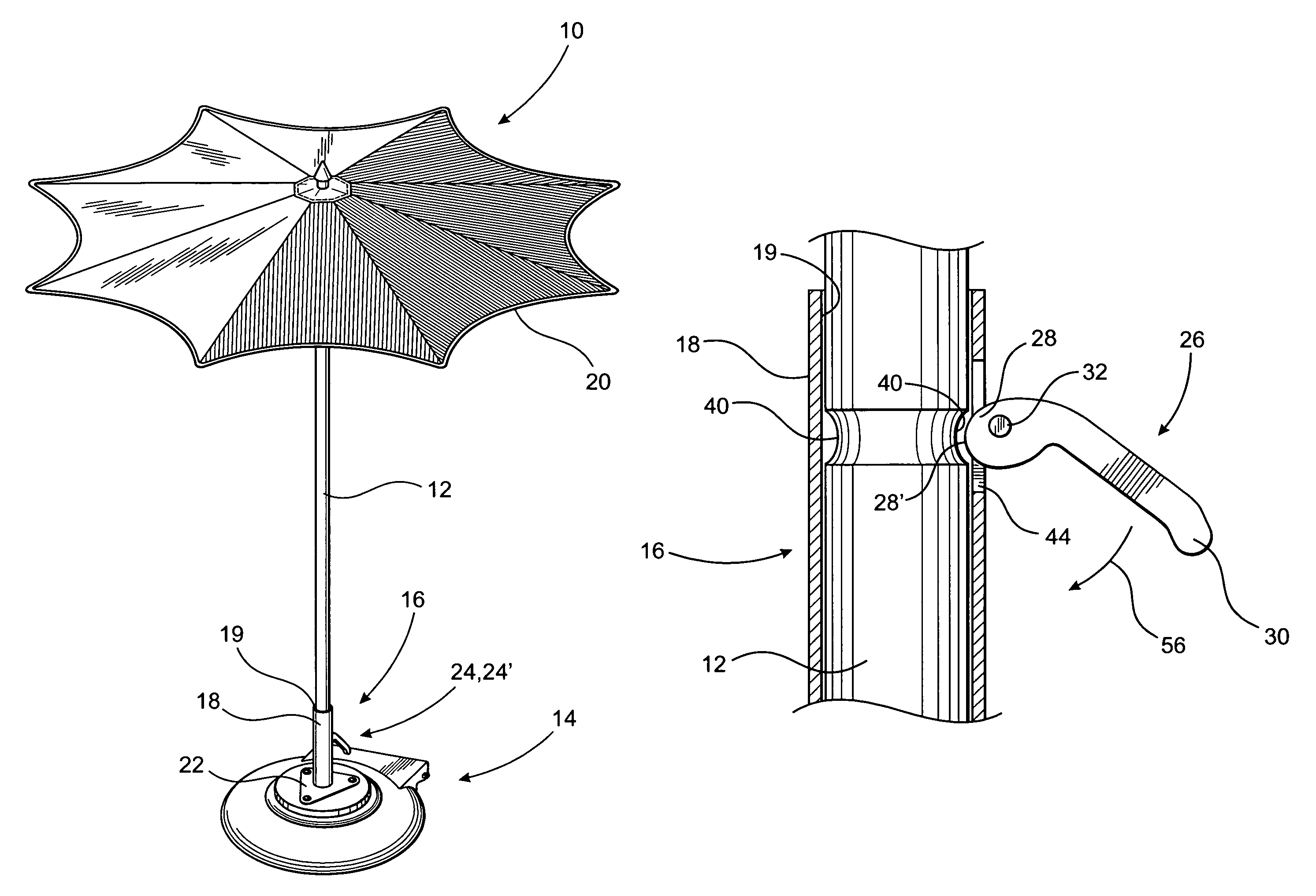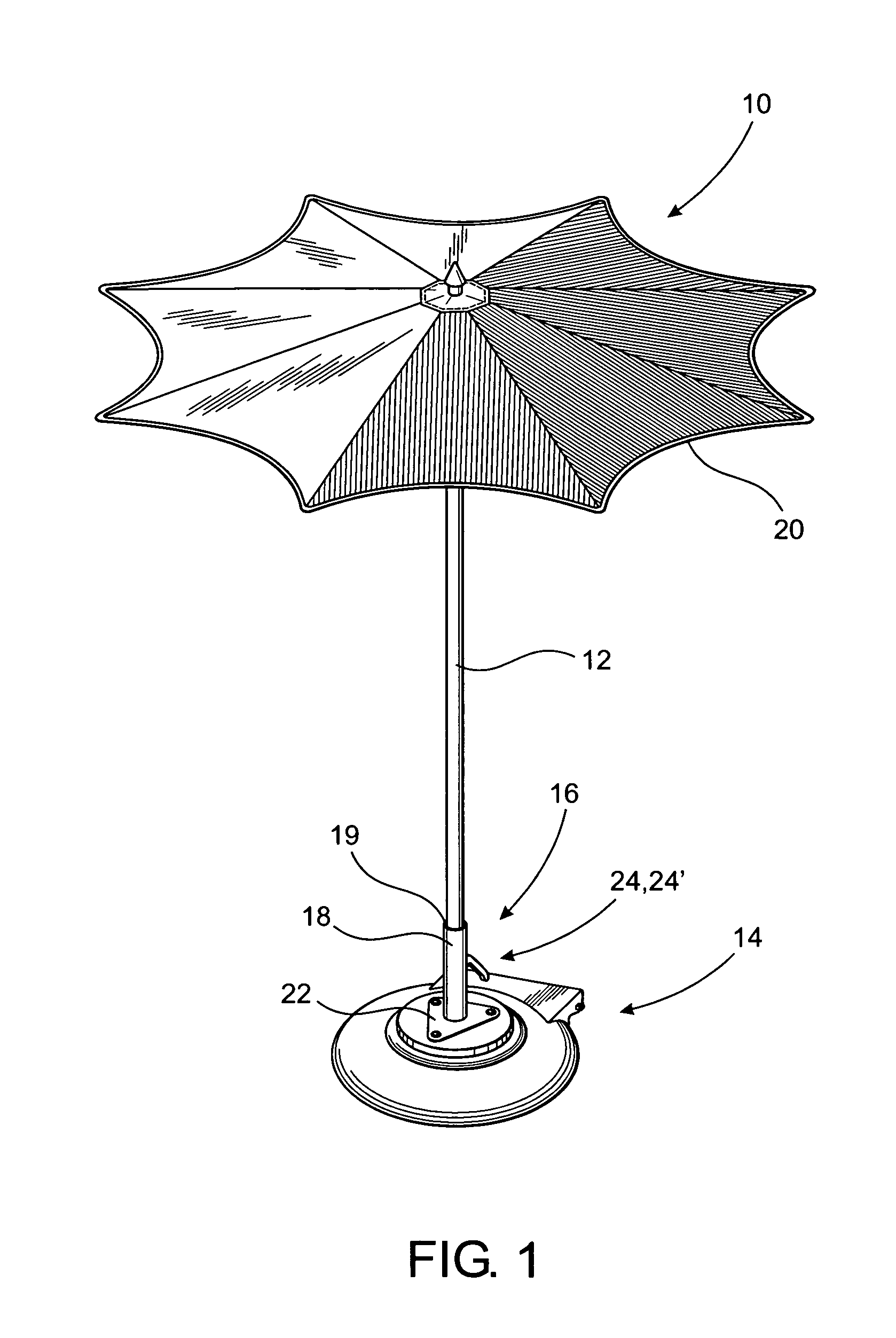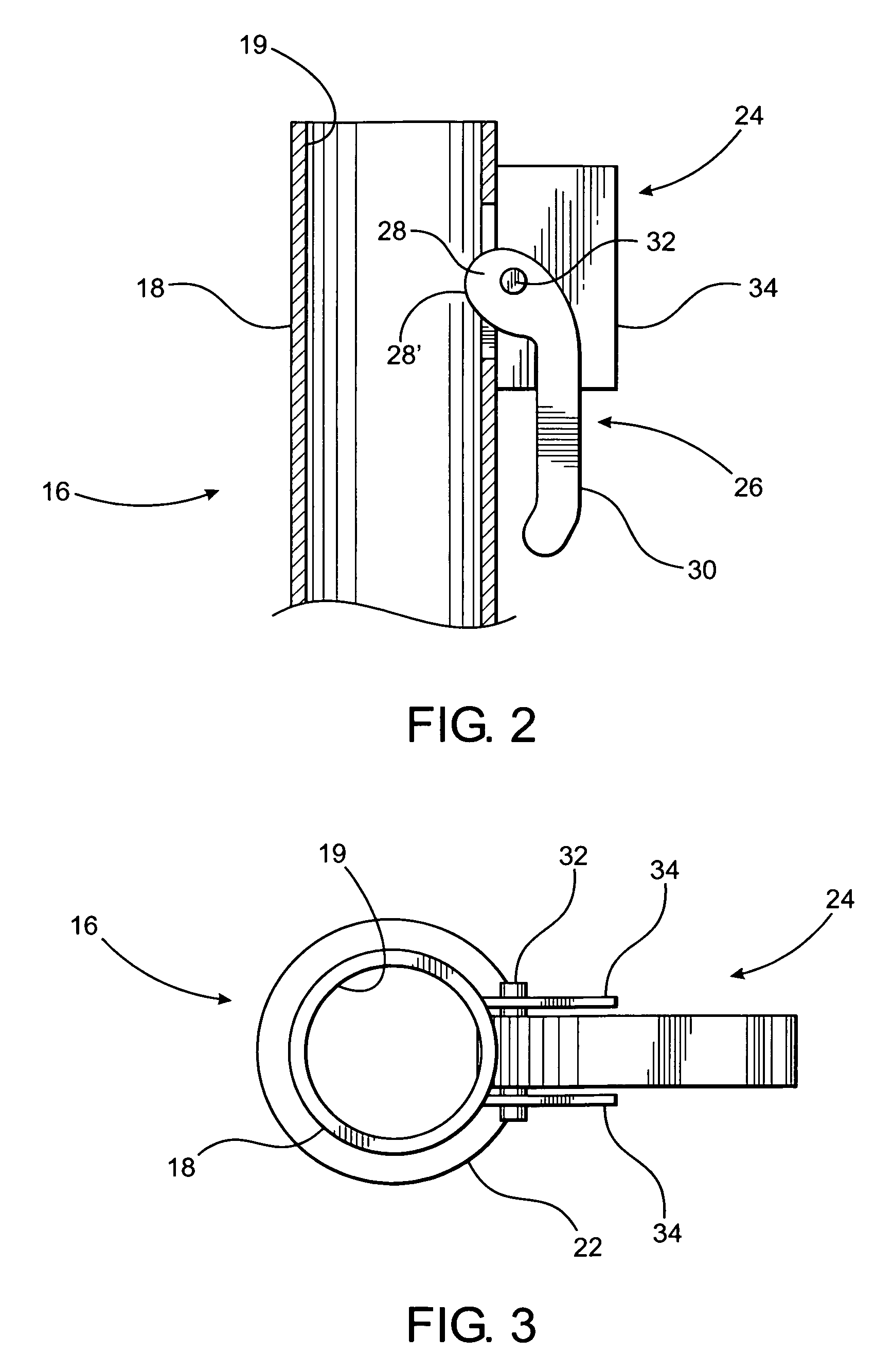[0011]This invention is directed to a locking assembly intended primarily for use with large outdoor umbrellas in hopes of presenting a solution to the long felt needs described above. As such, the present invention is structured to automatically secure the mast of an umbrella or other stanchion-like structures to a supporting base or like anchoring assembly, and preferably, also in a manner which allows for it to be removed therefrom, when that is desired. While a most preferred embodiment of the present invention will be described with specific reference to a support pole or mast associated with an outdoor umbrella, it is emphasized that the locking assembly of the present invention can be utilized to removably, securely and automatically connect a variety of different stanchion-like structures to a supporting and / or anchoring base, the base preferably being of the type incorporating a sleeve-like mounting structure.
[0012]As such, the mounting sleeve is structured to receive a free, distal end of the mast or stanchion within its interior. The umbrella or other assembly associated with the stanchion is thereby removably connected to the base in a secure and safe manner. Distinguishing structural features of the locking assembly further facilitate the quick and easy removal and release of the mast or stanchion with minimal manual manipulation thereof. For purposes of clarity, the term “stanchion” will be used to generally describe any of a plurality of masts or support poles associated with an outdoor umbrella or any type of elongated, substantially upright supporting structure associated with a variety of devices or assemblies, other than outdoor umbrellas.
[0014]Further, the locking assembly includes a locking member pivotally or otherwise movably disposable between what may be referred to as a locked orientation and a released orientation. As will be explained in greater detail hereinafter, the locked orientation of the locking member may be at least partially defined by an end or head portion of the locking member is disposed in interruptive engagement with an exterior portion of the stanchion which is disposed on the interior of the mounting structure. In contrast, the aforementioned released orientation of the locking member may be defined by a sliding engagement of the end or head portion or other portion of the locking member with an exterior portion of the stanchion disposed within the mounting structure. When in the released orientation the locking member will not interruptively interfere with the movement of the end portion of the stanchion into or out of the mounting structure. In addition and as also explained in greater detail hereinafter, in at least one embodiment of the locking assembly, the aforementioned released orientation may also be defined by disposition of the end or head portion of the locking member substantially out of engagement with the distal end of the stanchion and at least partially out of the interior of the mounting structure. It is of further note that the mounting structure may comprise an elongated sleeve like configuration having an open end and a hollow interior along at least a portion of the length thereof. However, the mounting structure can be defined by a variety of other structures, configurations, dimensions, etc. as long as there is cooperative structuring and functioning between the distal end or other engaged portion of the stanchion and the mounting structure which facilitates interconnection, support and positioning of the stanchion relative to the base in an intended manner.
[0015]As set forth above, one feature of a most preferred embodiment of the locking assembly of the present invention comprises the ability to automatically secure and removably connect or “lock” the stanchion to the base through interconnection with the mounting structure. This automatic, secure connection is accomplished without the need for manual manipulation of the locking assembly or any parts associated therewith. Similarly, the reliability of the locking assembly of the present invention provides enhanced safety features which require manual positioning of the locking member into the aforementioned released position, thereby ensuring that the stanchion cannot be inadvertently removed or detached from the supporting base due to ambient wind conditions or accidentally by an attending individual.
[0017]Accordingly, many of the various problems and disadvantages associated with conventional and prior art devices and assemblies for connecting a stanchion to a support base or like anchoring structure are overcome by virtue of the automatically operable locking assembly, as described in greater detail hereinafter with reference to the accompanying drawings. Further, a secure but removable interconnection of the stanchion to the supporting base is accomplished, while preventing inadvertent removal thereof by requiring at least a minimal manual manipulation of the locking assembly into the released orientation.
 Login to View More
Login to View More  Login to View More
Login to View More 


